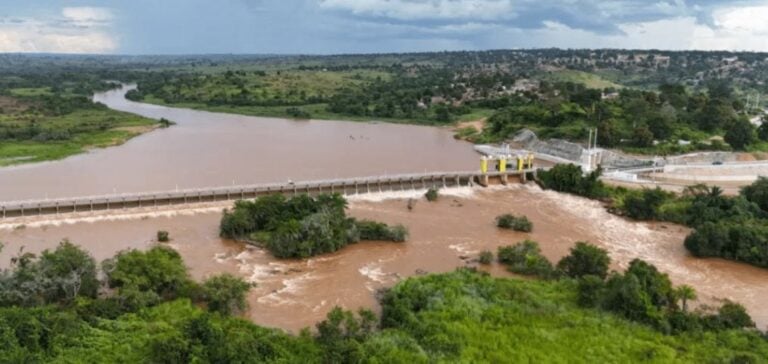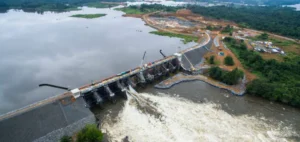The province of Lunda Norte in Angola recently benefited from a significant improvement in its electricity supply with the recommissioning of the Luachimo hydroelectric plant. The project, supervised by China Gezhouba Group Corporation (CGGC), a subsidiary of China Energy Engineering Corporation (CEEC or Energy China), has quadrupled the plant’s production capacity.
An ambitious rehabilitation project
The rehabilitation work, begun in 2017, included repairing hydromechanical equipment, building a new diversion canal, installing four new turbines with a capacity of 8.5 MW each, building a new 60 kV substation and adding transmission and distribution networks. This modernization increased the plant’s capacity from 8.8 MW to 34 MW. CGGC believes that this increase in capacity will help reduce the mismatch between electricity supply and demand in certain towns in the province of Lunda Norte, notably the capital Dundo, which has a population of almost 200,000. The refurbished plant will also benefit more than 30 industrial companies, which is of great importance for local economic and social development.
A Strategic Investment
The total investment for the rehabilitation of the Luachimo power plant amounts to $212 million, financed with the support of the Chinese government. This initiative is part of a close cooperation between the Angolan Ministry of Energy and Water and Chinese companies. At the re-inauguration ceremony, the Chinese ambassador to Angola, Zhang Bin, stressed that the success of this operation was a perfect illustration of this cooperation. The Luachimo power station, commissioned in 1953 when Angola was still a Portuguese colony, is located on the Luachimo River, a tributary of the Kasai River, itself a tributary of the Congo River. Modernizing this infrastructure is crucial to meeting the region’s growing energy needs.
Futuristic perspectives
At the same time, CGGC is also involved in the construction of Angola’s largest dam on the Kwanza River, which will be equipped with a 2,172 MW hydroelectric power station. This project, on a scale comparable to Côte d’Ivoire’s installed capacity (2,230 MW), represents a major step towards the country’s energy self-sufficiency.
In addition to their immediate impact on energy supply, these projects lay the foundations for sustained economic growth and increased industrial development in Angola. Sino-Angolan collaboration in the energy sector is therefore not only a model of successful partnership, but also a key vector of transformation for the country’s energy future.






















